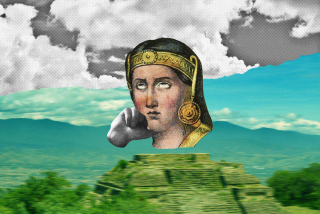Spanish Conquest: A Look at the Good and Bad
- Share via
There are some who think Christopher Columbus was a bigoted dope who did not know he had discovered a new land when he bumped into what is now the Bahamas 500 years ago.
And there are others who think the Italian explorer’s exploit--the quincentennial of which is being marked this year--was the greatest event that ever happened to mankind.
The Huntington Library’s exhibit “Spain in the Americas: What is the Legacy?” is intended to let people draw their own conclusions. It is based on the San Marino library’s vast collection of rare books, maps and manuscripts documenting Spanish exploration from 1492 to 1600.
“We felt the best way to deal with it was not to duck the issue,” said Bill Frank, the exhibit’s curator.
Frank pointed out that, in terms of the larger picture, the Spanish conquest was a disaster for American Indians. But when one looks at the details of what was going on in that era, things are not so black and white. There were Spaniards who would not exploit the Indians, and there were Indians who cooperated with the Spanish for their own profit.
“They were human beings,” Frank said.
A response board for comments has been set up as part of the exhibit because “we were curious about what the response would be,” Frank said. “Secondly, we felt that people would appreciate it.”
Exhibit visitors have put up their opinions about what the Spanish did and there have even been a few debates. “I have one Catholic person who is praying for my soul,” said Frank, commenting on those discontented with some of the bloodier aspects of the display.
The Huntington, at 1151 Oxford Road, is generally open to the public Saturday and Sunday from 10:30 a.m. to 4:30 p.m. and Tuesday through Friday from 1 to 4:30 p.m. For Columbus Day, it will also be open Monday from 1 to 4:30 p.m. There is no admission charge, but a $5 donation per adult is requested.
The exhibit runs through October 31.
More to Read
Sign up for Essential California
The most important California stories and recommendations in your inbox every morning.
You may occasionally receive promotional content from the Los Angeles Times.













